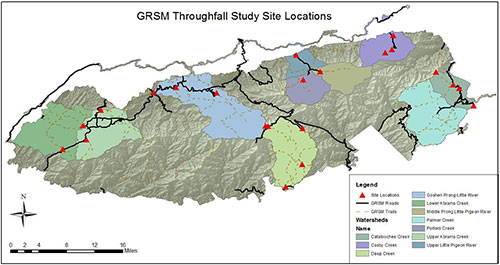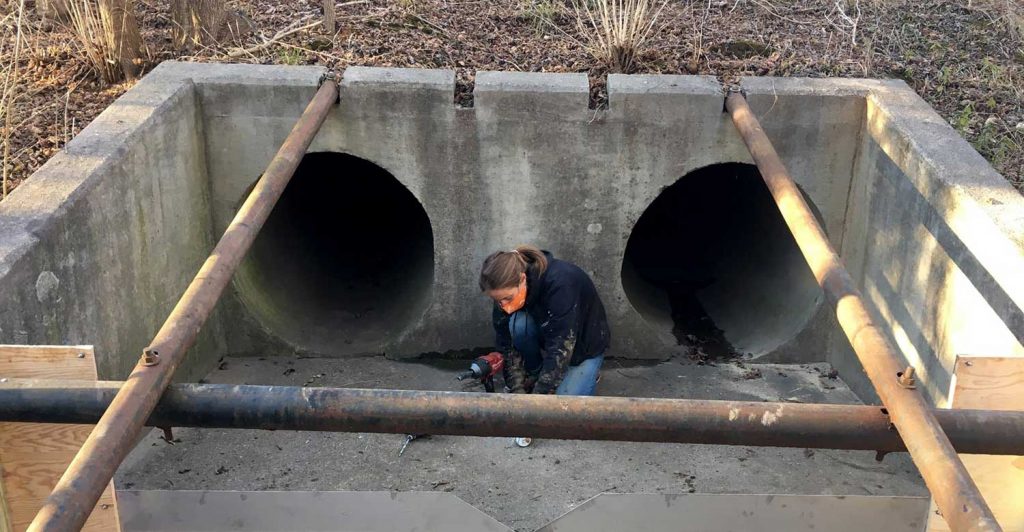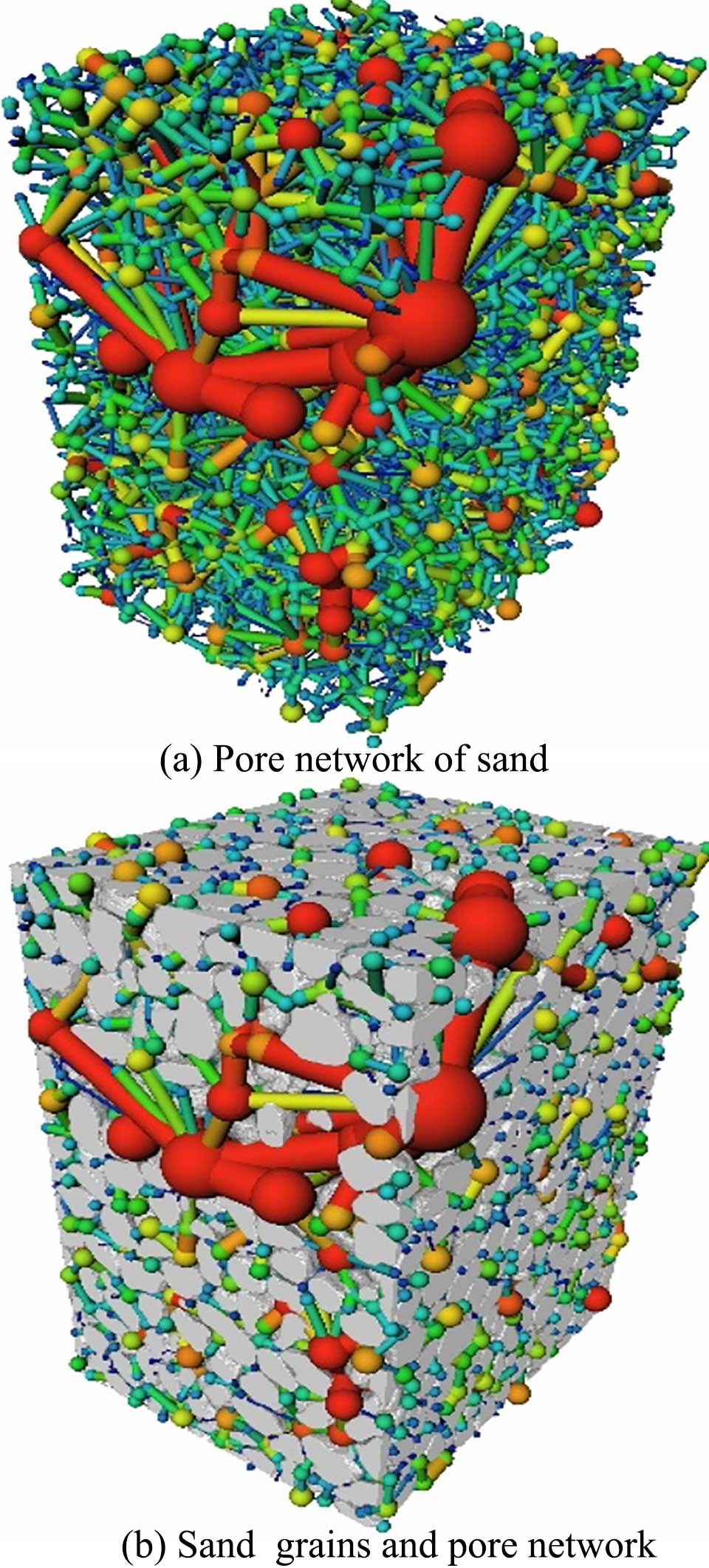The Tennessee Water Resources Research Center (TNWRRC) is a federally designated state research institute supported in part by the U.S. Geological Survey and the Environmental Agency. It serves as a primary link among water-resource experts in academia, government, and the private sector, and the diversity of its staff in terms of background and expertise enhances flexibility and positions the Center to establish productive partnerships.
Jump to:
- Impacts of Acid Deposition on Water Quality and Aquatic Biota
- Hydrologic Connectivity Using Regenerative Stormwater Conveyance
- 3D Dynamic Evolution of Pore Water-Air Interaction within Saturated Sheared Sand
NPS Project: Impacts of Acid Deposition on Water Quality and Aquatic Biota
(a Cooperative Agreement between National Park Service and UT)
Project Description—For decades, acidic air pollutants from regional and local sources have been transported by prevailing wind currents and deposited onto high-elevation watersheds in the Great Smoky Mountains National Park (GRSM), on the Tennessee/North Carolina border (Figure 1). In order to investigate the potential effects of acid deposition on stream water quality, the GRSM began a Water Quality (WQ) Monitoring Program in 1991 consisting of: 1) detailed hydrologic and biogeochemical monitoring at Noland Divide Watershed (NDW), a high-elevation forested site, and 2) Park-wide stream survey monitoring for spatial mapping and temporal trend analysis of stream acidification. Figure 2 shows photos at the NDW monitoring station. In addition to the routine monitoring, special studies are conducted to investigate questions that remain on the fate, biogeochemical transformation, and transport of acid/base ions and dissolved metals. This past year two special studies are on-going; they are: 1) a sulfate isotope analysis to quantify the mass flux of sulfate generated from the high-elevation Anakeesta pyritic shale formation in comparison to acid deposition inputs; and 2) a throughfall chemistry mapping, which has been over 15 years since the last GRSM effort by Dr. Kathleen Weathers at Cornell University (Fig. 3). We work to gether with Dr. Charles Driscoll at Syracuse University, in which his research team developed and uses the BGC-PnET model for estimating critical loads in the GRSM.

One of the most interesting investigations is the observed responses in deposition and stream chemistry due to emission reductions from local and regional coal-fired power plants. Many geochemistry parameters of wet/dry deposition at the monitoring site show strong and direct responses to emissions reductions: measured deposition amounts decreased, precipitation pH and ANC increased, and nitrogen speciation in precipitation samples shifted; all within the same 2008-2009 time frame. Through fall sulfate deposition has declined from above 1,500 eq/ha/yr before 2007 to approximately 500 eq/ha/yr after which. However, the changes in deposition have not yet translated to significant changes in stream sulfate concentrations or annual mass exports. It appears the lack of response in stream sulfate is influenced by the biogeochemistry in associated with the nitrogen cycle dynamics, base cation availability, and carbon-sulfate dynamics.
Hydrologic Connectivity Using Regenerative Stormwater Conveyance
In Powell, Tennessee at Collier Preserve, a public park needs a remediation method for the erosive flows produced at a stormwater outfall bringing offsite drainage through the property. Implementing an RSC in this area will protect the park’s trails, increase water quality of the receiving waters, and serve as a public attraction. The watershed routing to the site is 5.06 ha of predominantly field and forested land. The site itself consists of two 1.07 m diameter pipes that spill onto 61 m of previously unmanaged forest until discharging into a swale connected to Beaver Creek.
Earlier this year, Dr. John Schwartz, director of the Tennessee Water Resources Research Center, and Dr. Jon Hathaway received a grant from the Environmental Protection Agency to study the loss of headwater wetlands that have resulted from the Southeast region’s rapid and explosive urbanization. Efficient drainage systems route water quickly to local streams, bypassing floodplains and drying once vibrant wetlands. New techniques studied by the University of Tennessee show promise in restoring hydrologic connections allowing wetlands to be reestablished in these environments. The goals of this project are 1) to demonstrate the possibilities that Regenerative Stormwater Conveyances offer for recreating wetlands in urban environments and 2) to identify and document best practices for design of these systems.

3D Dynamic Evolution of Pore Water-Air Interaction within Saturated Sheared Sand

Many foundation systems are supported by water-saturated sand deposits. At the micro-scale, the
voids between sand grains (pore space) are filled with water. The sand resists applied foundation
loads through friction and interlocking between particles, which is known as the shear strength of
sand. The presence of air within the pore space in addition to water introduces new forces and
fundamentally changes the shear strength of sand. Alshibli’s preliminary experiments show that
standard procedures to saturate laboratory sand specimens may suffer from a major shortcoming
despite decades of use and wide acceptance by the geotechnical community.
The goal of this research is to monitor the evolution of sand-water-air interaction using fast
dynamic synchrotron microcomputed tomography imaging at 6-micron resolution under shear loading
conditions. This research will (i) investigate the influence of particle morphology and gradation on
the degree of saturation of sheared sand; (ii) monitor local water- air interaction within pore
space of sheared sand under drained condition; and (iii) evaluate the effects of specimen density on
the change of degree of saturation of sheared sand. The following fundamental questions will be
answered: (1) what is the minimum value of pore water pressure to maintain the same degree of
saturation in sheared sand; (2) does the sand specimen remain 100 percent saturated when it is
sheared; (3) if air bubbles develop; how they will evolve and what are the factors that affect their
onset and growth. 3D probing of dynamic particle-water-air interaction is expected to offer unique
measurements to support the development of a new particle-scale theory that better describes the
behavior of saturated sheared granular materials.



